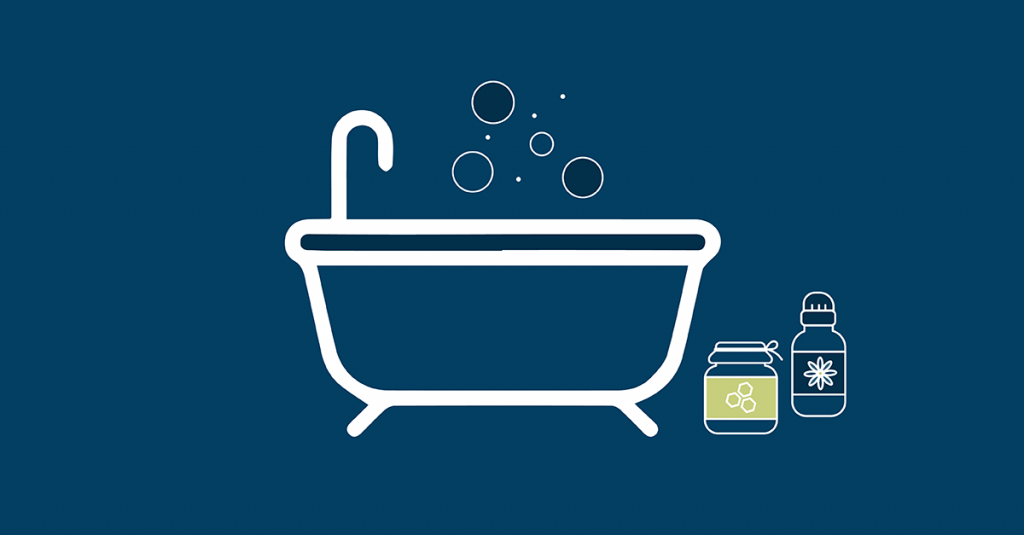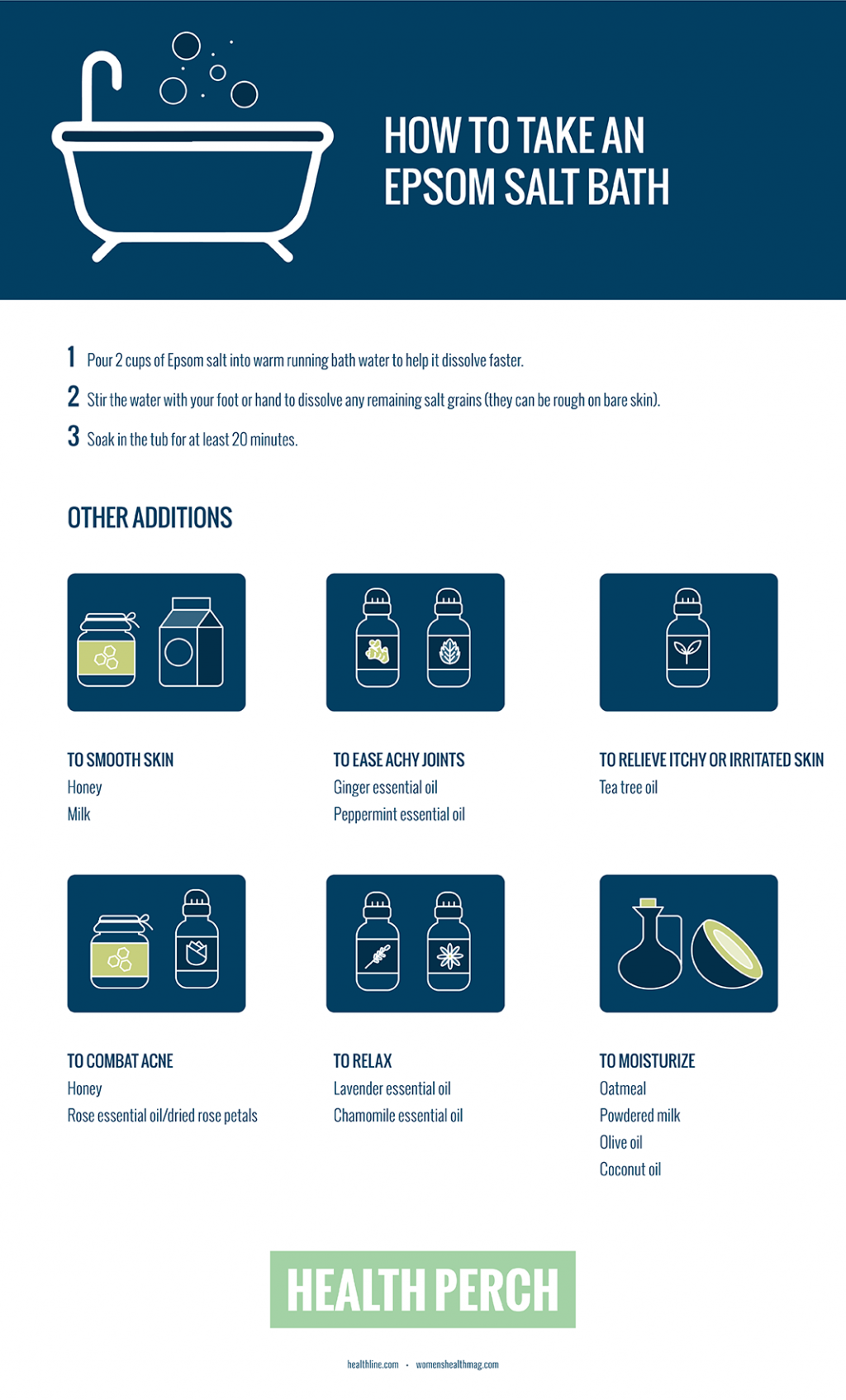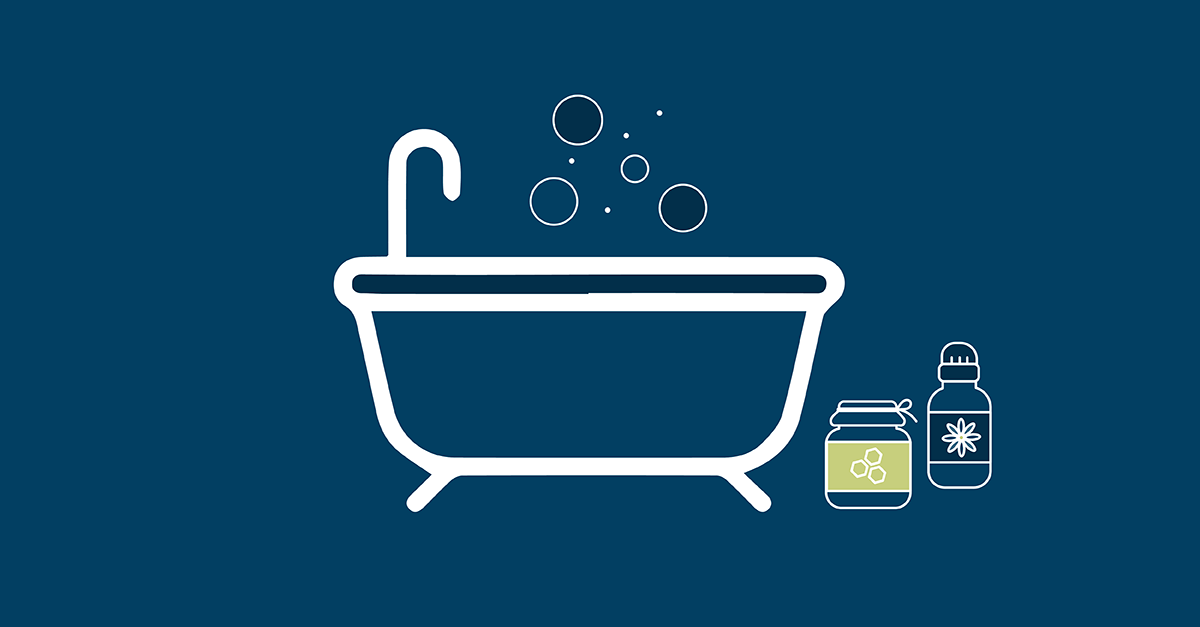
Epsom salt, while not a new discovery, has gained popularity for its natural mental and physical benefits. The mineral is composed of magnesium sulfate and is named after the British town Epsom, where it was discovered in an underground well in the 17th century. Despite its name, this inexpensive remedy contains no salt. According to history, a local in Epsom noticed that wounds on animals who waded into the water healed quicker than if the animals hadn’t taken a dip. Soon people flocked to the town to experience the health benefits of this special water, turning Epsom into a spa town. Today, you only need to travel to your local drugstore to find the coveted mineral. But is Epsom salt the miraculous mineral it’s said to be?
Do the Longstanding Claims Hold Up?
Epsom salt has a reputation as a muscle relaxer, pain reducer, and skin soother. It may be the magnesium that takes all the credit; studies point to the encouraging benefits of magnesium, particularly when it’s absorbed through the skin versus taken orally.
Magnesium supplements are widely used for hypomagnesaemia, or magnesium deficiency, a somewhat common condition (research shows magnesium intake has reduced over the years). The condition can cause fatigue, weakness, nausea, and loss of appetite. A deficiency can also be due to alcoholism, poorly controlled diabetes, malabsorption, or medication use.
Despite limited studies on the specific uses for Epsom salt, health practitioners often recommend it for the healing properties linked to its magnesium content. One study showed that bathing in magnesium allows it to pass directly into the tissue where it is absorbed into cells throughout the body, making it more effective than oral application. Another small study showed that subjects who bathed in Epsom salt for a prolonged period had increased blood magnesium concentrations.
Bathing in Epsom salt has been known to relax muscles and relieve pain in the back, shoulders, neck, and skull. Because of this, it can possibly reduce migraines and improve sleep in people who suffer from insomnia. It may also be a helpful home remedy for athletes with muscle soreness. Beyond relieving overall muscle tenderness from a tough workout, Epsom salt may help soothe blisters or ankle pain associated with running. Good news if you don’t have access to a full bathtub but suffer from foot injuries—you can combine 1/2 cup of Epsom salt in warm water in a bucket large enough to soak your feet in. Soak for 30 to 60 minutes twice a week to support foot health.
Although not scientifically proven, Epsom salt may have healing and anti-inflammatory properties, too. Researchers in one small study found that magnesium improved skin barrier function (meaning skin is more protected from the external environment), hydration, and inflammation, which makes it a potential solution for eczema or other inflammatory skin conditions.
Potential Risks
Most of the risks associated with Epsom salt exist when it is taken orally. Epsom salt can be used as a laxative to treat constipation but taking too much can result in diarrhea, bloating, or upset stomach. An overdose can cause nausea, headache, and lightheadedness.
Bathing in Epsom salt is relatively safe but could potentially cause itchy, dry skin or allergic reactions. If you experience hives or a rash, check the label—it’s possible there’s more to it than just magnesium sulfate (such as fragrance, a common skin irritant). It’s also a good idea to steer clear of Epsom salt baths if you have an open wound or severe burn.

Tips for Using Epsom Salt
When shopping around, remember that quality is everything. Always check the label to review the ingredients and buy from a reputable source; many salts on the market are mass produced with unnatural chemicals. If you’re on the hunt for scented bath salts, look for ones with organic essential oils. The generic term fragrance often denotes the use of synthetic ingredients.
For baths, use about 1 to 2 cups of Epsom salt for a standard-sized tub filled with warm water (more than that can dry out skin) and soak for 20 minutes. Start with one bath a week and increase as needed, paying attention to how your skin reacts. You may need to reduce bath time in the winter when the air is drier. Check with your doctor beforehand if you have low blood pressure as hot water can lower blood pressure. Avoid bathing if you have an open wound or infection—the Epsom salt could cause irritation.
Epsom salt can be taken orally as a laxative but check with your doctor first. The recommended dosage is usually 2 to 6 teaspoons per day dissolved in water to relieve occasional constipation. Just make sure you purchase a variety made specifically for oral administration.
The exfoliating properties also make it a great beauty product. Mix 1 tablespoon of Epsom salt into a full shampoo bottle to exfoliate the scalp and add volume to roots. You can also mix it with bath oil to exfoliate and moisturize skin in the shower (though some Epsom salt crystals may be too rough on skin when used as an exfoliant).
Conclusion
Whether future studies continue to link Epsom salt to health and medical benefits or not, drawing a warm bath is a relaxing treat and the addition of bath salts has minimal risks. Time to get soaking!
